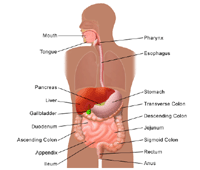Anatomy and Function of the Liver
Anatomy of the liver
The liver is an organ located in the upper right part of the belly (abdomen). It is beneath the diaphragm and on top of the stomach, right kidney, and intestines. The liver has many functions.
There are 2 distinct sources that supply blood to the liver:
Oxygenated blood flows in from the hepatic artery.
Nutrient-rich blood flows in from the hepatic portal vein.
The liver has 2 main sections (lobes). Both are made up of 8 segments. The segments are made up of a thousand small lobes (lobules). The lobules are connected to small ducts (tubes) that connect with larger ducts to ultimately form the common hepatic duct. The common hepatic duct transports bile made by the liver cells to the gallbladder and the first part of the small intestine (the duodenum). Bile is a clear yellow or orange fluid that helps digest food.
What are the functions of the liver?
The liver controls most chemical levels in the blood. It also secretes a clear yellow or orange fluid called bile. Bile helps to break down fats, preparing them for further digestion and absorption. All of the blood leaving the stomach and intestines passes through the liver. The liver processes this blood and breaks down, balances, and creates nutrients for the body to use. It also breaks down (metabolizes) medicines in the blood into forms that are easier for the body to use. The liver does many important things including:
Makes bile, which helps carry away waste and break down fats in the small intestine during digestion
Makes certain proteins for blood plasma
Makes cholesterol and special proteins to help carry fats through the body
Stores and releases glucose as needed
Processes hemoglobin to use its iron content (the liver stores iron)
Changes harmful ammonia to urea (urea is one of the end products of protein metabolism that is excreted in the urine)
Clears the blood of medicines and other harmful substances
Regulates blood clotting
Fights infections by making immune factors and removing bacteria from the bloodstream
Clears bilirubin (too much bilirubin makes skin and eyes turn yellow)
When the liver has broken down harmful substances, they are excreted into the bile or blood. Bile by-products enter the intestine and ultimately leave the body in bowel movements. Blood by-products are filtered out by the kidneys and leave the body in the form of urine.

Connect with us:
Download our App: